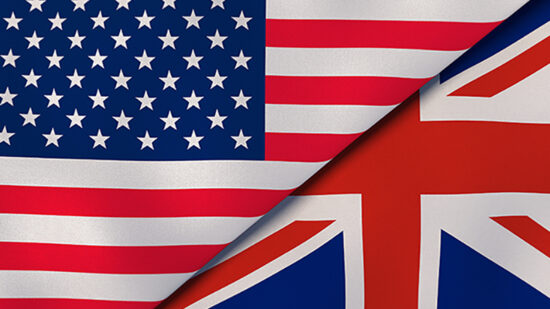The Federal Reserve and Bank of England meet this week to make crucial decisions on interest rates. They are engaged in a game of chicken with financial markets. Cut too much, and they send a signal that economies are under threat, cut too little and they risk precipitating a slow down. They also need to be confident that inflation is firmly on the back foot, and recent conflicting data has made that more difficult.
The most recent inflation data in both the UK and US has given pause for thought. In July, UK inflation rose 2.2% in July year-on-year, compared with 2% in June, with housing and utilities prices driving the increase. Core inflation (which includes energy, food, alcohol and tobacco) remains at 3.3%, higher than the Bank of England would like.
It is the same picture in the US. While overall inflation dropped from 2.9% to 2.5%, core inflation rose 0.3% month-on-month on higher prices for housing and travel. This was higher than expectations of 0.2%. In Europe, the direction on inflation is clearer, with the last set of data showing inflation dropping to 2.2% from 2.6%.
The blips in the UK and US data need to be set against a longer-term trend. The US is now in its fifth month of inflation below 3%. The UK’s inflation rate dropped below 3% in April, and has been hovering around 2% ever since. Europe has marked its tenth month of sub-3% price rises.
See also: Head to head: Pedal to the metal
“Inflation is clearly coming down,” said Chris Robinson, MPS investment director at Premier Miton. “We’ve got inflation levels that last year were in the high single digits and we’re now seeing inflation in the UK and US getting closer to central bank targets of 2%. That’s a very encouraging sign.”
Nevertheless, the uncertainty in the recent figures has been reflected in central bank action to date. With more flexibility available, the European Central Bank cut rates by 25 basis points (bps) again this month, following its 25bps cut in June. This pushes the deposit facility rate to 3.5%, notably below the 5% rate for the UK and 5.33% effective Fed funds rate in the US.
In contrast, the Federal Reserve is still wobbling on whether to cut by 25bps or 50bps in its meeting this week, while the Bank of England is likely to defer a rate cut until November.
Benjamin Melman, global chief investment officer, asset management, at Edmond de Rothschild, is optimistic. He said: “Jerome Powell’s Jackson Hole speech has opened many possibilities for monetary policy: employment has become the top priority, now that inflation is virtually ancient history. Rate cuts could, potentially, be considerable.
“According to the Federal Reserve’s dot plot, the long-term (or neutral) rate would stand at 2.75%, 2.5% above current levels. If inflation is no longer a concern and the Fed wishes to revive the labour market, a return to the neutral rate – or even below – could be feasible.”
‘Last mile’ inflation
However, central banks also need to weigh longer term considerations. The Bank for International Settlements has talked about the challenge of ‘last mile’ inflation. This primarily relates to the difficulty of reducing services inflation. It said: “(The) shift towards more services-driven inflation may imply slower disinflation. This is because of three factors. First, services prices are less sensitive to energy prices and, hence, may not respond strongly to their recent declines.
“Second, price growth in services tends to be more persistent than that in goods, in part because of the higher labour intensity of services. Third, the pandemic brought about substantial deviations in the relative price of services vis-à-vis core goods from its previously established trend; if this trend re-asserts itself, services prices could increase further to catch up. This possible slowdown of disinflation could prompt monetary policy to remain tighter for longer.”
Nick Langley, manager on the Clearbridge Global Infrastructure Income fund, also sees inflationary risks from structural factors. Companies are increasingly prioritising security of supply over cost considerations, creating a trend for reshoring and near-shoring. This is likely to raise costs for companies. He also pointed to large fiscal spending programmes, such as those around decarbonisation.
See also: Turning point: Have growth stocks finally had their day?
He added: “There are still parts of the economy that are supply constrained – and housing is a good example of that.”
The US election also matters. Langley said: “If Trump does get elected, then his policies are very inflationary. 10% tariff on everything. That’s about 1.7% to add to US inflation. He wants to close the border, that’s going to push wages up. And he wants a weaker dollar, so that will add to inflation. At the same time, the treasury in the US has been issuing a lot of bills. It needs to issue a lot of bonds next year further out on the curve, which will put further pressure on long-term bond yields.
“We could well see a situation where Powell starts cutting and the bond market rebels. The long end of the curve could start to rise again.”
Melman agreed that political uncertainty will be a hurdle for the US central bank. “If Donald Trump wins the election, will he go ahead and apply his inflationary programme? It seems highly possible that the Fed would choose to cut its rates proactively before the end of the year, possibly further than markets are expecting, to ensure it does not lag the business cycle.”
The UK and Europe do not face the same political tensions, and their economies are not growing as fast. It is also possible that tariffs that prove inflationary in the US are deflationary elsewhere. As such, inflationary pressures may not be as acute outside the US. However, central banks are grimly aware that they cannot take their eye off the ball.
Investors can’t afford to assume that rates will follow a gentle path downwards now that central banks have made the first move. Ongoing volatility in inflation, and therefore in bond yields, is likely to be a characteristic of fixed income, and creates uncertainty on cash rates from here.








